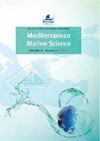Fisheries Reference Points under Varying Stock Productivity and Discounting: European Anchovy as a Case Study
IF 2.3
3区 环境科学与生态学
Q1 MARINE & FRESHWATER BIOLOGY
引用次数: 0
Abstract
European anchovy (Engraulis encrasicolus) is the main commercially exploited fish stock in the Black Sea region, providing a vital source of livelihood and revenue for local communities and national economies. In recent decades, the Black Sea anchovy stock has faced many human-induced threats, including overfishing, eutrophication, invasive species, and climate change while these threats have raised concerns about the status and long-term productivity of the stock. To ensure sustainable levels of exploitation under potential future changes in stock productivity, we here estimate and compare a suite of biological and economic reference points under different levels of stock productivity and discount rates using an age-structured bioeconomic model setup. Our model simulations showed that optimal fishing mortalities achieving maximum sustainable yield (FMSY) and maximum economic yield (FMEY) increase at higher stock productivity but are always lower than the historically high mean levels of exploitation. Furthermore, we illustrate that the stock biomass at maximum economic yield (BMEY) is larger than the stock biomass at maximum sustainable yield (BMSY) at all stock productivities and discount rates, except at low stock productivity under high levels of discounting (i.e., 10%, 20%). By illustrating the ecological and economic benefits of reducing exploitation rates, we expect that our estimated reference points can add value to the decision-making process for the management of the European anchovy fishery and ensure long-term sustainable management even under future climate-driven changes in stock productivity.变化种群生产力和贴现下的渔业参考点:以欧洲鳀鱼为例研究
欧洲凤尾鱼(Engraulis encrasicolus)是黑海地区主要的商业捕捞鱼类,为当地社区和国家经济提供了重要的生计和收入来源。近几十年来,黑海凤尾鱼种群面临着许多人为威胁,包括过度捕捞、富营养化、物种入侵和气候变化,这些威胁引起了人们对种群状况和长期生产力的担忧。为了确保在潜在的未来种群生产力变化下的可持续开发水平,我们在此使用年龄结构的生物经济模型设置估算和比较了不同种群生产力和贴现率水平下的一套生物和经济参考点。我们的模型模拟表明,在较高的种群生产力条件下,实现最大可持续产量(FMSY)和最大经济产量(FMEY)的最佳捕捞死亡率增加,但始终低于历史上最高的平均开发水平。此外,我们还发现,在所有种群生产率和贴现率下,除了在低种群生产率和高贴现率(即10%和20%)下,最大经济产量(BMEY)下的种群生物量大于最大可持续产量(BMSY)下的种群生物量。通过说明降低捕捞率的生态和经济效益,我们期望我们估计的参考点可以为欧洲凤尾鱼渔业管理的决策过程增加价值,并确保在未来气候驱动的种群生产力变化下的长期可持续管理。
本文章由计算机程序翻译,如有差异,请以英文原文为准。
求助全文
约1分钟内获得全文
求助全文
来源期刊

Mediterranean Marine Science
MARINE & FRESHWATER BIOLOGY-
CiteScore
5.20
自引率
17.90%
发文量
34
审稿时长
>12 weeks
期刊介绍:
The journal Mediterranean Marine Science (MMS), published by the Hellenic Centre for Marine Research (HCMR), issues three volumes annually. The journal welcomes original research articles, short communications, New Mediterranean Biodiversity records, extended reviews, comments, and Theme sections in all fields of Oceanography, Marine Biology, Marine Conservation, Fisheries and Aquaculture in the Mediterranean area and the adjacent regions. All content is peer reviewed.
 求助内容:
求助内容: 应助结果提醒方式:
应助结果提醒方式:


